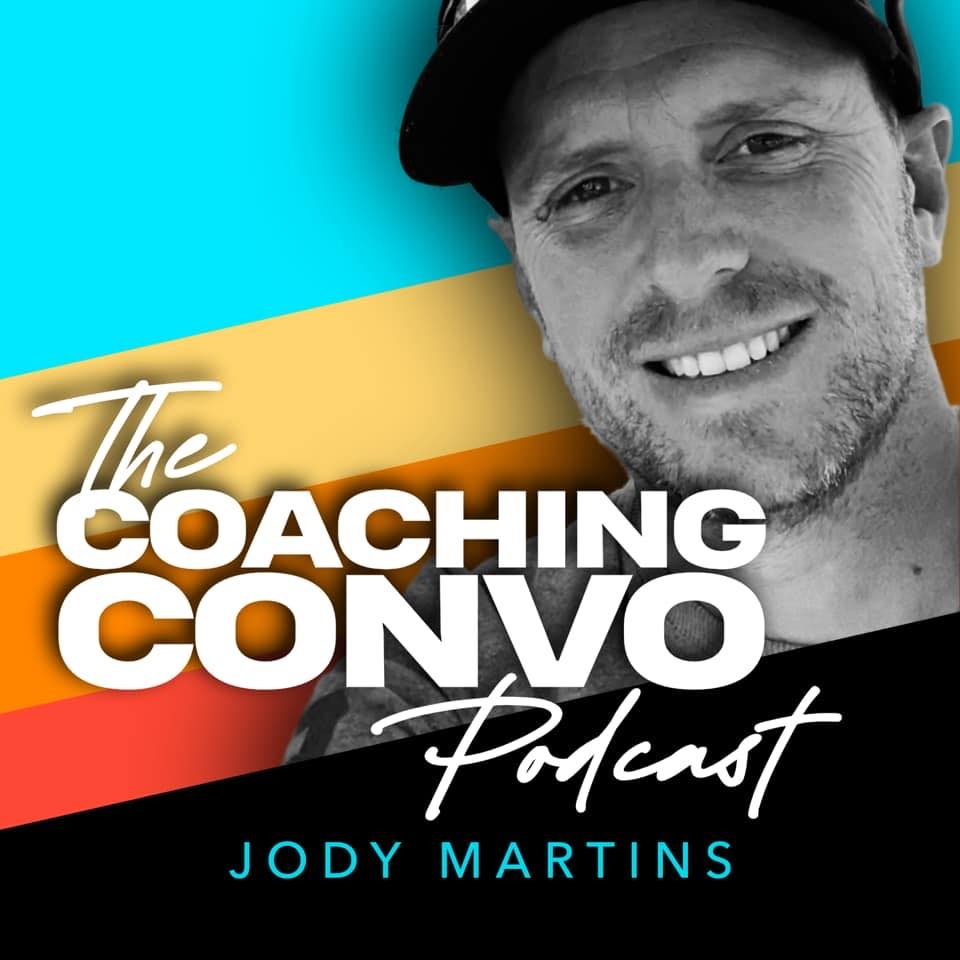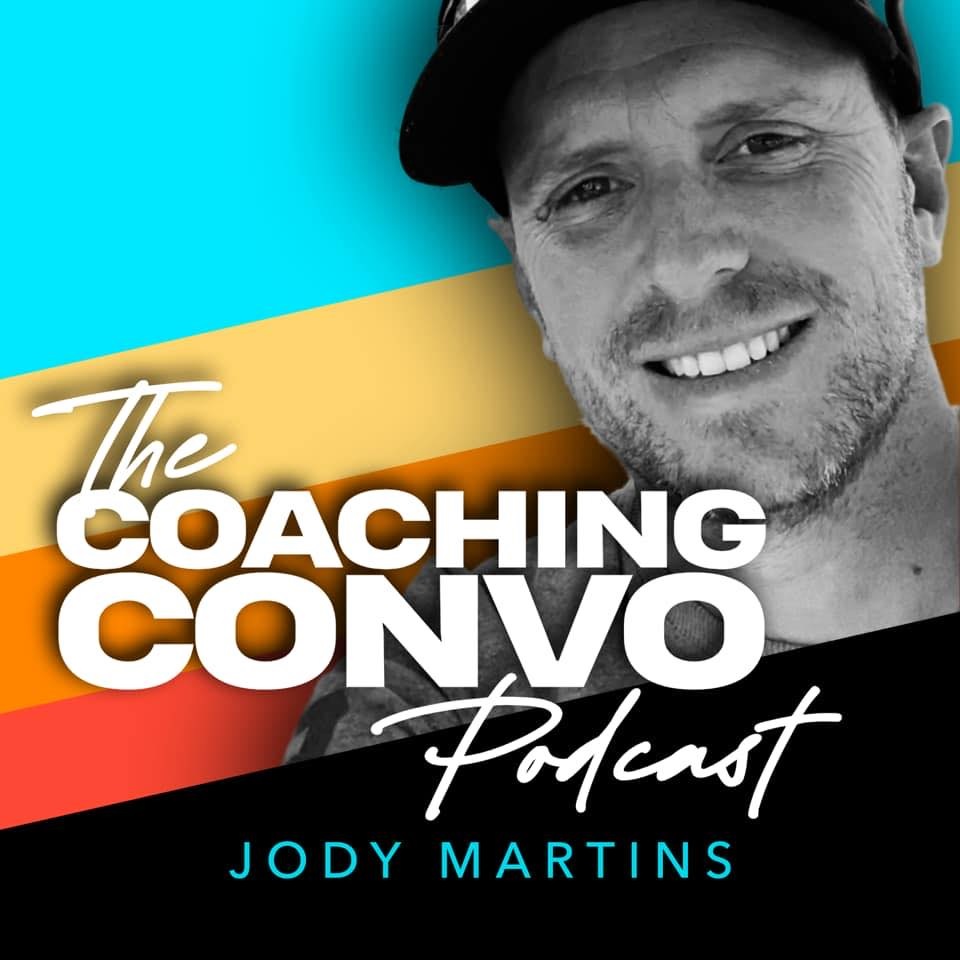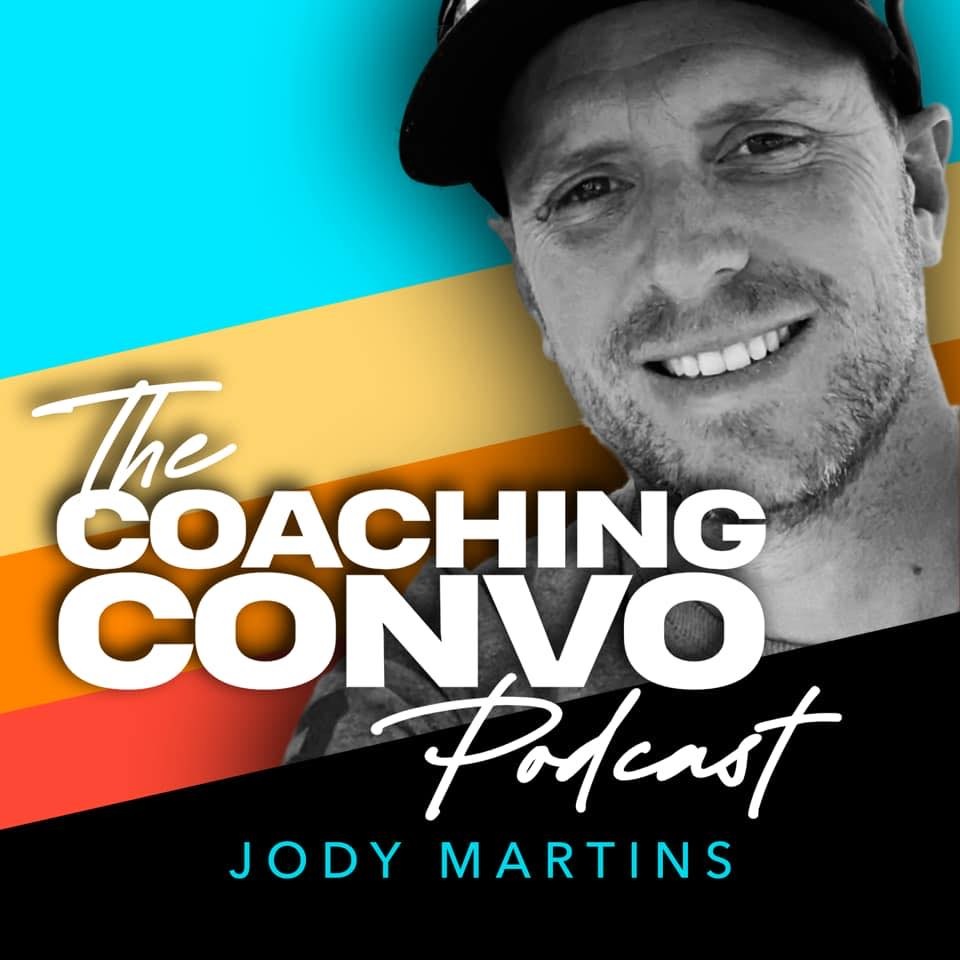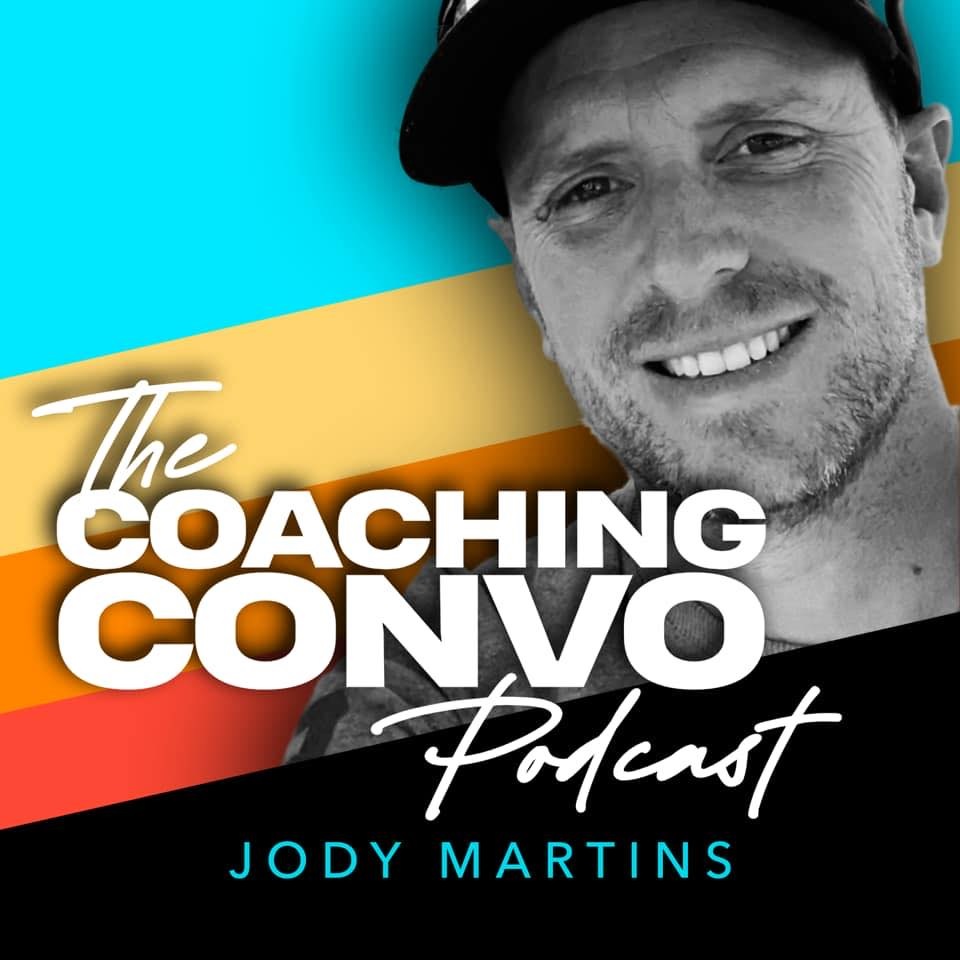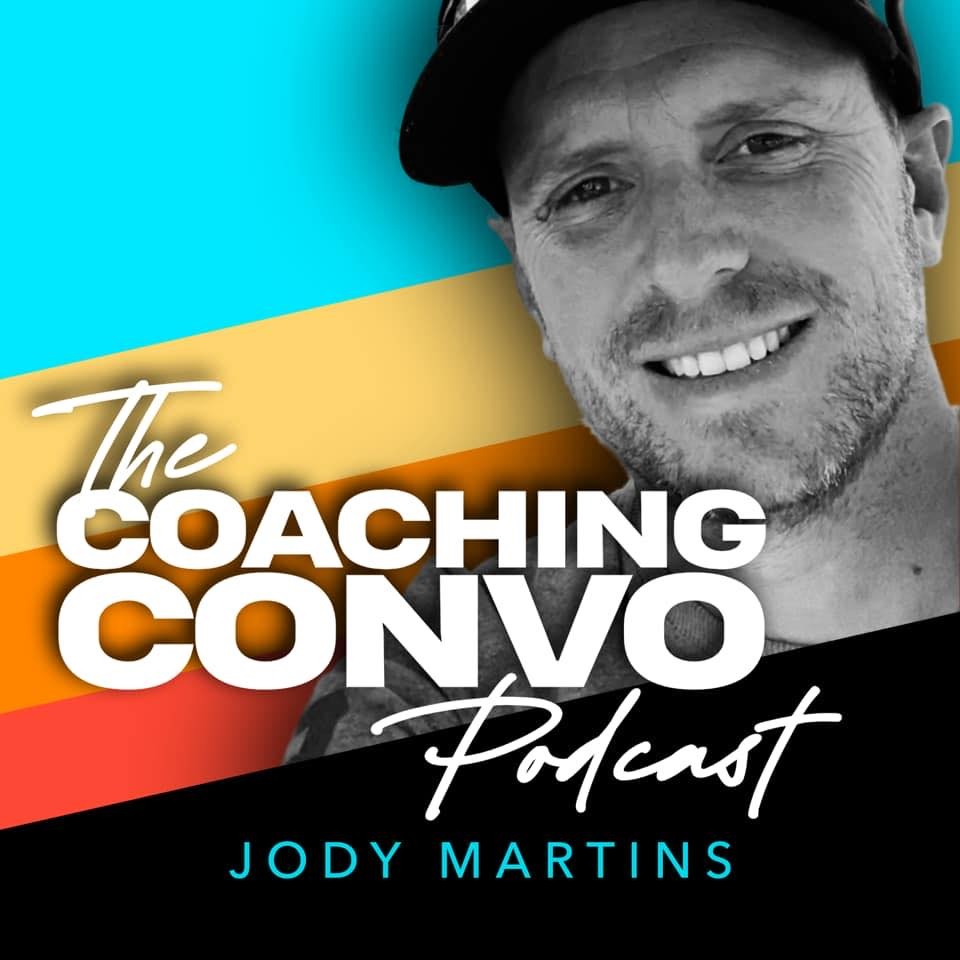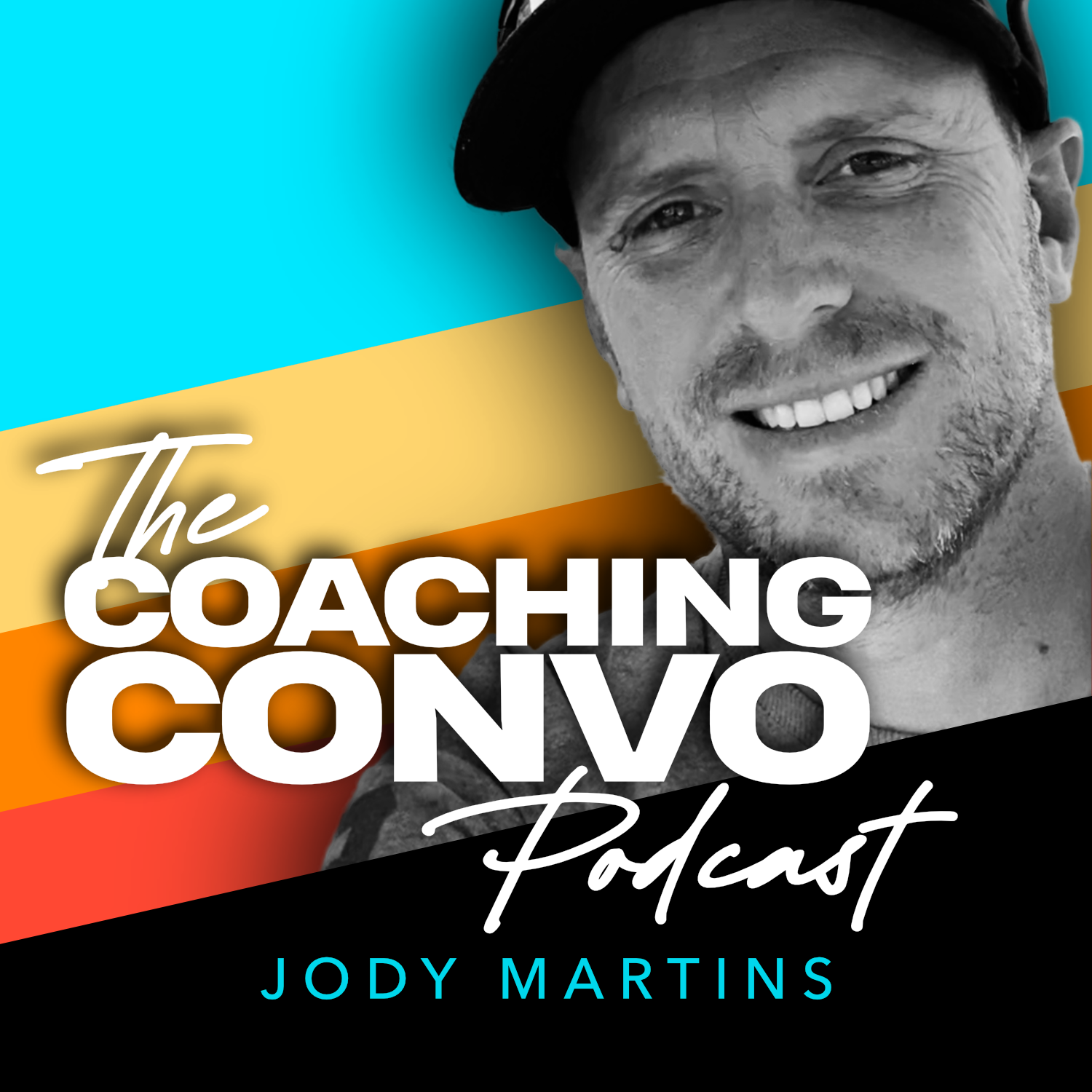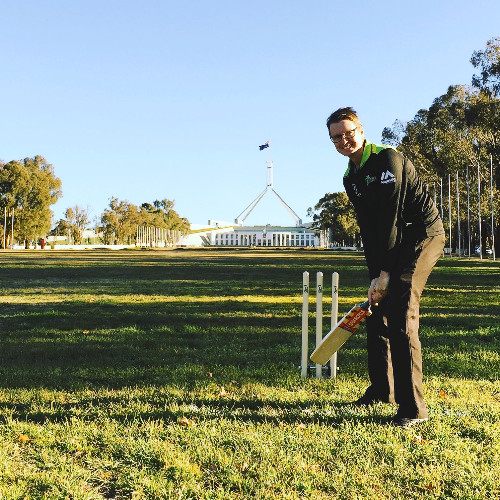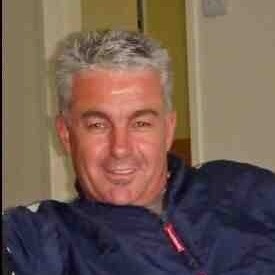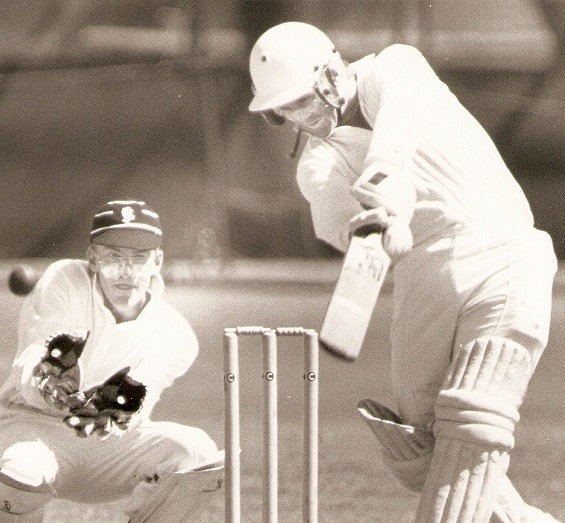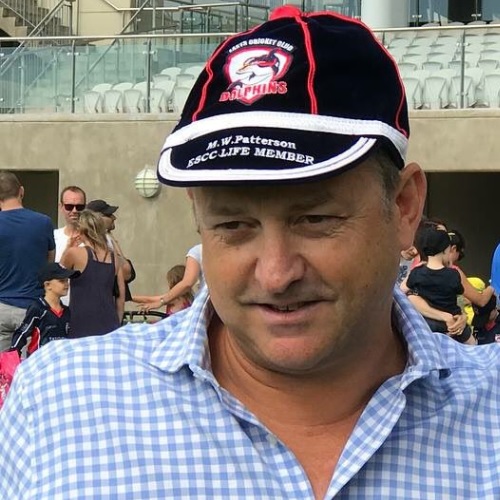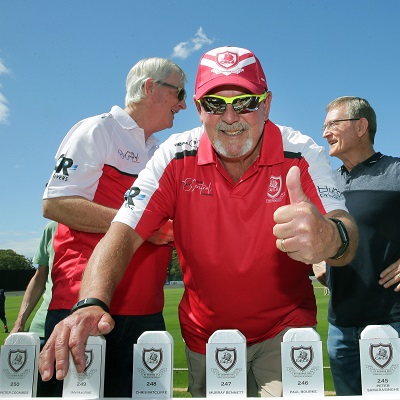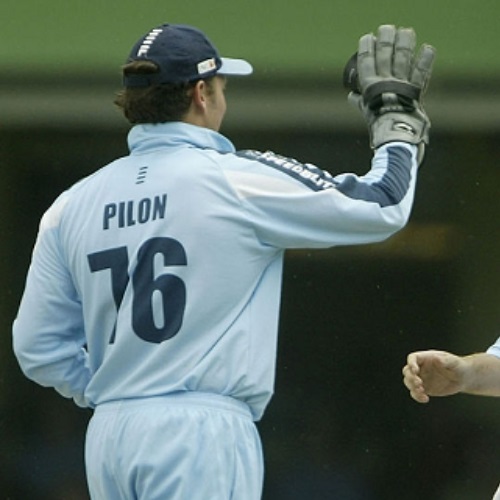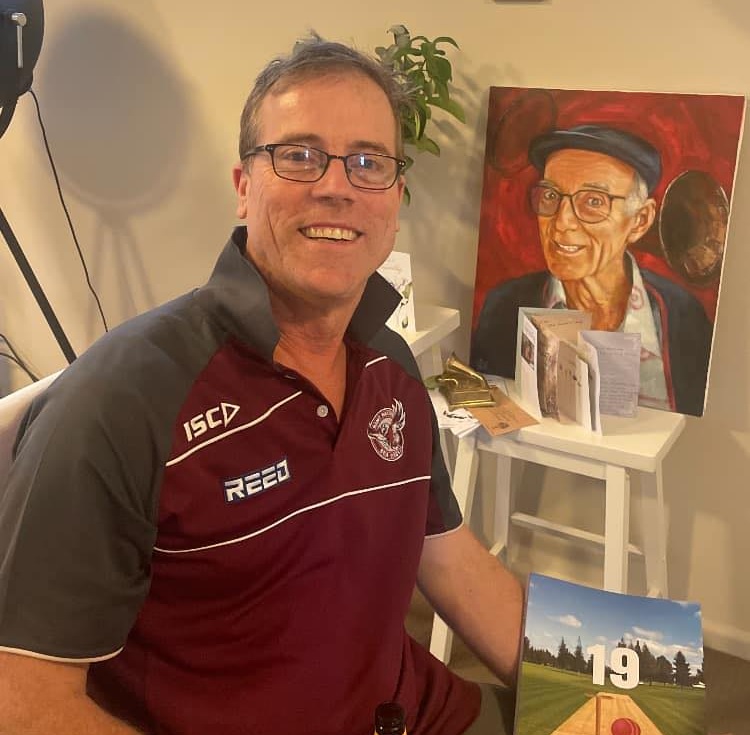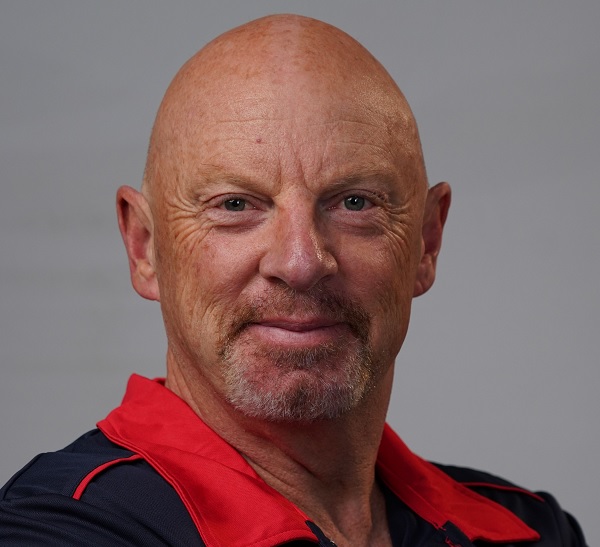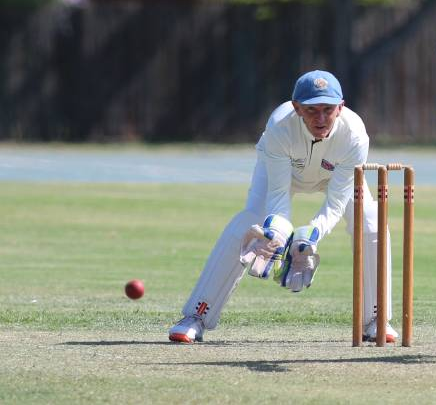About Me
Jody Martins
Current Rating: 5 / 5
Cricket Coach Performance Formula
www.jodymartins.co
Western Cape, South Africa
+27656260723
Mental Performance Coach for Cricketers.
Podcast Host - The Performance Formula Podcast.
I coached cricket for 24 years, mostly to junior cricketers between the ages of 5 - 19. Fortunate to count among my clients Joshua Richards (CGL Lions) and Josh & Matt Tromp (USA Major & Minor League.
As a Mental Performance Coach, I have the privilege of working with athletes like Temba Bavuma, Wihan Lubbe, Yaseen Valli.
Podcast Host - The Performance Formula Podcast.
I coached cricket for 24 years, mostly to junior cricketers between the ages of 5 - 19. Fortunate to count among my clients Joshua Richards (CGL Lions) and Josh & Matt Tromp (USA Major & Minor League.
As a Mental Performance Coach, I have the privilege of working with athletes like Temba Bavuma, Wihan Lubbe, Yaseen Valli.
Favourite players: Ricky Ponting Sachin Tendulkar Shane Warne
Favourite grounds: Wanderers Stadium Jhb
All-time cricket hero: Shane Warne
Favourite bat:
Most memorable moment in cricket:
What’s the best cricket advice you’ve ever received:
Partner Sponsors
My Activity
question
Q: Over the past fifty years, Dr.Jacques Dallaire has enjoyed the opportunity to work directly with thousands of individuals from the high-performance sports world and beyond including law enforcement, the entertainment world, and the business community.
Dr. Dallaire splits his time delivering sports team, occupational group, and corporate team performance programs and individual one-on-one programs with high-performance competitors.
He is a Founding Member of the International Council of Motorsport Sciences, a Board Member of the Stand 21 ‘Racing Goes Safer’ Foundation, and in 2007 was inducted into the Canadian Motorsports Hall of Fame.
Dr. Dallaire splits his time delivering sports team, occupational group, and corporate team performance programs and individual one-on-one programs with high-performance competitors.
He is a Founding Member of the International Council of Motorsport Sciences, a Board Member of the Stand 21 ‘Racing Goes Safer’ Foundation, and in 2007 was inducted into the Canadian Motorsports Hall of Fame.
https://www.cricconnect.com/profile/696/jody-martins/blog/1952/jacques-dallaire-the-cure-for-fear-and-self-doubt
blog post
Over the past fifty years, Dr.Jacques Dallaire has enjoyed the opportunity to work directly with thousands of individuals from the high-performance sports world and beyond including law enforcement ...
question
Q: There Is No Blue Book. Every Athlete is Unique.
Johan Vorster is a professional cricket coach who is the Head Coach of Cricket World Academy. He has played and coached in South Africa and Australia, bringing a unique insight into the differences between SA and AUS and what high performance is. Driven by his high standards he produces skilled cricketers capable of performing under pressure.
Johan is based in North West Province and coaches cricketers from all around the world.
Johan Vorster is a professional cricket coach who is the Head Coach of Cricket World Academy. He has played and coached in South Africa and Australia, bringing a unique insight into the differences between SA and AUS and what high performance is. Driven by his high standards he produces skilled cricketers capable of performing under pressure.
Johan is based in North West Province and coaches cricketers from all around the world.
https://www.cricconnect.com/profile/696/jody-martins/blog/1916/johan-vorster-there-is-no-blue-book-every-player-is-unique
blog post
There Is No Blue Book. Every Athlete is Unique.Johan Vorster is a professional cricket coach who is the Head Coach of Cricket World Academy. He has played and coached in So ...
question
Q: Luke Pomfret is the Senior Regional Talent Manager at Sunrisers Cricket. He has worked with Northamptonshire CCC, where he was a Pathway Performance Coach, assistant Women’s 1st XI coach and Academy coach.
Luke has also worked as a Women and girls’ pathway scout for ECB, a support coach for Loughborough Lightening and with Chance to Shine in Lancashire. Luke has been involved in the progression of Women and Girls’ cricket from a young age, earning a Chancellor’s Scholarship from his university for his work in the community and commitment to promoting the participation of women in cricket.
Luke has also worked as a Women and girls’ pathway scout for ECB, a support coach for Loughborough Lightening and with Chance to Shine in Lancashire. Luke has been involved in the progression of Women and Girls’ cricket from a young age, earning a Chancellor’s Scholarship from his university for his work in the community and commitment to promoting the participation of women in cricket.
https://www.cricconnect.com/profile/696/jody-martins/blog/1902/luke-pomfret-grow-the-fundamentals-and-your-uniqueness
answered
Q: My son is 15 and bowls off spin and we’d like to ask about the difference between bowling overspin or side spin. He bowls more side spin now but as he gets taller the coaches are saying he needs to bowl more overspin.
Can you help about the benefits of both?
Can you help about the benefits of both?
A: Love these answers... a quick thought I would like to add on...
I would urge you to develop over spin on the ball. My primary reason is...
If you can apply over spin to the ball, to bowl with side spin is easy. ie you will then be able to master through practice how much spin you can place on the ball.
Those bowler who focus on side spin, struggle, and at times can't bowl with over spin. I agree with all the comments above on the pace and bounce of the wicket etc. If you have the skill you can choose how to use it... if you don't have the skill then you only have one option really from a spinning point of view. You can always also change pace, angle etc. My comment is more geared towards the spinning of the ball.
I would urge you to develop over spin on the ball. My primary reason is...
If you can apply over spin to the ball, to bowl with side spin is easy. ie you will then be able to master through practice how much spin you can place on the ball.
Those bowler who focus on side spin, struggle, and at times can't bowl with over spin. I agree with all the comments above on the pace and bounce of the wicket etc. If you have the skill you can choose how to use it... if you don't have the skill then you only have one option really from a spinning point of view. You can always also change pace, angle etc. My comment is more geared towards the spinning of the ball.
answered
Q: We have a right arm fast bowler in our team who never bowls around the wicket to left handers. It’s something he’s never done or being coached to think about.
We’d like to ask what are some of the reasons or benefits we could offer to at least try?
We’d like to ask what are some of the reasons or benefits we could offer to at least try?
A: Hi Ben,
Reasons for bowling around the wicket...
1. Change of angle. Left handers face a lot of right handers angling the ball across them. Their skills are often well equipped to this line of attack. The will face less left arms seamers and even less right arm around. If the right arm blower has the skill to move the ball both ways... this can be very troubling for left haded batters.
2. You bring all dismissals into play. Over the wicket LBW for the most part is out of the reckoning.
3. The angle change will make the left-hander play more. Bowling over the wicket the left-hander can leave any ball slightly off their stumps.
As a side note... without knowing the bowler's skills.
Many fast bowlers hardly ever go around the wicket. Perhaps they are comfortable, perhaps it's their skills or plans that just work over the wicket. I would be sure to be clear on the benefit the bowler will get from going around the wicket. However, performance could drop if there is a lot of resistance to the around-the-wicket option. I would suggest creating wins in the nets to build the confidence to a level where doing it in a game doesn't feel like a big risk to the bowler.
Reasons for bowling around the wicket...
1. Change of angle. Left handers face a lot of right handers angling the ball across them. Their skills are often well equipped to this line of attack. The will face less left arms seamers and even less right arm around. If the right arm blower has the skill to move the ball both ways... this can be very troubling for left haded batters.
2. You bring all dismissals into play. Over the wicket LBW for the most part is out of the reckoning.
3. The angle change will make the left-hander play more. Bowling over the wicket the left-hander can leave any ball slightly off their stumps.
As a side note... without knowing the bowler's skills.
Many fast bowlers hardly ever go around the wicket. Perhaps they are comfortable, perhaps it's their skills or plans that just work over the wicket. I would be sure to be clear on the benefit the bowler will get from going around the wicket. However, performance could drop if there is a lot of resistance to the around-the-wicket option. I would suggest creating wins in the nets to build the confidence to a level where doing it in a game doesn't feel like a big risk to the bowler.
answered
Q: looking for a fast bowler all rounder to play in Nottinghamshire in season 2024 starting April.
Will look at paying fares and wages plus accommodation if credentials are met.
Grade 1 standard preferred but 2nd grade will be considered
please contact clive graham 07751542128
Will look at paying fares and wages plus accommodation if credentials are met.
Grade 1 standard preferred but 2nd grade will be considered
please contact clive graham 07751542128
A: Hi Clive, let me know if you are still looking.
answered
Q: I have a bowling action very similar to Lasith Malinga. But sometimes the ball goes down the leg side and I just want to know if there are any tips that might help me perfect this bowling action
A: Hi Gayindu,
Great question...
I would suggest that you look at your overall alignment... from the start of your run-up to the end of your follow-through. ie make sure that you are staying on as straight a line towards the target. A key area to look at... and I mention this because I have not seen video of you bowl... but many bowlers with a 'sling' action can 'get across themselves' with their landing in the crease. ie alignment of feet. Again make sure this is aligned towards your target. (if you draw a line between the landing points of your back and front foot, the line should ideally be pointing towards the target) If you do close off a bit this can lead to bowling down the leg side.
The second thing I would look for is where your follow-through is going. Often with 'sling' bowlers their is a tendency to lean towards the offside (for right-handed bowlers)... this can be a cause for bowling down leg. From this lean the follow through could either stop early (not a full rotation through your action) or fall away toward the off side... both these reasons could cause bowling down leg.
To summarise.
1. General alignment.
2. Alignment of fee at landing.
3. Lean to the side at release. (Falling away)
4. Follow through not completing action.
5. Follow through falling away towards the off side.
Hope this helps.
Great question...
I would suggest that you look at your overall alignment... from the start of your run-up to the end of your follow-through. ie make sure that you are staying on as straight a line towards the target. A key area to look at... and I mention this because I have not seen video of you bowl... but many bowlers with a 'sling' action can 'get across themselves' with their landing in the crease. ie alignment of feet. Again make sure this is aligned towards your target. (if you draw a line between the landing points of your back and front foot, the line should ideally be pointing towards the target) If you do close off a bit this can lead to bowling down the leg side.
The second thing I would look for is where your follow-through is going. Often with 'sling' bowlers their is a tendency to lean towards the offside (for right-handed bowlers)... this can be a cause for bowling down leg. From this lean the follow through could either stop early (not a full rotation through your action) or fall away toward the off side... both these reasons could cause bowling down leg.
To summarise.
1. General alignment.
2. Alignment of fee at landing.
3. Lean to the side at release. (Falling away)
4. Follow through not completing action.
5. Follow through falling away towards the off side.
Hope this helps.
blog post
Luke Pomfret is the Senior Regional Talent Manager at Sunrisers Cricket. He has worked with Northamptonshire CCC, where he was a Pathway Performance Coach, assistant Women’s 1st XI coach and Acad ...
question
Q: A few stories… nameless… client confidentiality.
Cricketer gets in touch… we last spoke a year ago. He is struggling….
Lacks that feel-good confidence.
We talk.
Once…
and there is a shift…
but not enough yet.
We talk again…
Bang 75…
Bang 115.
She says quietly coach I need to talk to you about that doubt stuff you mentioned…
Cricketer gets in touch… we last spoke a year ago. He is struggling….
Lacks that feel-good confidence.
We talk.
Once…
and there is a shift…
but not enough yet.
We talk again…
Bang 75…
Bang 115.
She says quietly coach I need to talk to you about that doubt stuff you mentioned…
https://www.cricconnect.com/profile/696/jody-martins/blog/1765/can-one-conversation-make-a-difference
blog post
A few stories… nameless… client confidentiality.Cricketer gets in touch… we last spoke a year ago. He ...
question
Q: Andre Tredoux is a rugby coach… currently the Head Coach for Shimlas Rugby at the University of the Freestate. He has coached at school level as well as in Russia at Rugby Club Slava Moscow and in Japan at NTT Docomo Red Hurricanes.
In this conversation, we talk about…
What makes a rugby player?
Being critical of your own performance around your strengths and weaknesses.
Building the ultimate rugby player.
The maverick and buying into the team being first.
Old School vs New Generation of Coaching.
Getting the best out of players.
Peer coaching and building knowledge.
Dynasties are built around the emergence of great player leaders.
Mental Methods as part of game strategy.
In this conversation, we talk about…
What makes a rugby player?
Being critical of your own performance around your strengths and weaknesses.
Building the ultimate rugby player.
The maverick and buying into the team being first.
Old School vs New Generation of Coaching.
Getting the best out of players.
Peer coaching and building knowledge.
Dynasties are built around the emergence of great player leaders.
Mental Methods as part of game strategy.
https://www.cricconnect.com/profile/696/jody-martins/blog/1660/andre-tredoux-dynasties-are-build-around-great-leaders
question
Q: Storm Clark is a Strength & Conditioning Coach working with the Northern Cape Heat, a cricket team that plays in the South African Division 2. In the past two seasons, they have won the CSA 4-day competition at their level and undoubtedly the work Storm does with these cricketers to last and perform over 4 days paid dividends.
In this conversation, we talk about…
Cricket being a power-sprint sport.
Separating the cricketer from the athlete.
The distances cricketers cover in a test match.
Working on the body and how that affects the mind.
Improving without feeling like physical training is the worst thing ever.
Finding S&C or fitness coaches that make it enjoyable and make you better.
Fitness testing as a tool to know what do.
In this conversation, we talk about…
Cricket being a power-sprint sport.
Separating the cricketer from the athlete.
The distances cricketers cover in a test match.
Working on the body and how that affects the mind.
Improving without feeling like physical training is the worst thing ever.
Finding S&C or fitness coaches that make it enjoyable and make you better.
Fitness testing as a tool to know what do.
https://www.cricconnect.com/profile/696/jody-martins/blog/1661/storm-clark-making-athletes-better-athletes
blog post
Storm Clark is a Strength & Conditioning Coach working with the Northern Cape Heat, a cricket team that plays in the South African Division 2. In the past two seasons, they have won the CSA 4-day ...
blog post
Andre Tredoux is a rugby coach… currently the Head Coach for Shimlas Rugby at the University of the Freestate. He has coached at school level as well as in Russia at Rugby Club Slava Moscow and ...
answered
Q: Apart from trying to hit the ball harder how do I get more power in my batting to hit the ball through the field. I’m 17 and wanting to play grade cricket this season.
A: Hi Leo...
Bat speed is what is needed to hit the ball 'harder'. To generate bat speed you need faster hands or a bigger arc (ie back swing to follow through) or even both if possible. I hear the comments on timing and smaller arc (not too big back swing or follow through), however you can time with a bigger arc of the bat too. The timing in relation to ball delivery is different to a smaller arc.
Larger back swings can provide better timing, more speed, more time on the ball. Even though it sounds contradictory, most batters when they make the arc bigger are early on shots initially and can learn to wait even longer before they swing their bat.
None of this matters if you do not have a stable base from which the swing happens. Imagine a motor moving very fast with a loose screw in the foundation. I am not just talking balance, but the ability to move to the ball and then solidify the bottom half of your body while the top half moves freely. If the base moves through contact power and control are compromised.
Just a different take ;-)
Bat speed is what is needed to hit the ball 'harder'. To generate bat speed you need faster hands or a bigger arc (ie back swing to follow through) or even both if possible. I hear the comments on timing and smaller arc (not too big back swing or follow through), however you can time with a bigger arc of the bat too. The timing in relation to ball delivery is different to a smaller arc.
Larger back swings can provide better timing, more speed, more time on the ball. Even though it sounds contradictory, most batters when they make the arc bigger are early on shots initially and can learn to wait even longer before they swing their bat.
None of this matters if you do not have a stable base from which the swing happens. Imagine a motor moving very fast with a loose screw in the foundation. I am not just talking balance, but the ability to move to the ball and then solidify the bottom half of your body while the top half moves freely. If the base moves through contact power and control are compromised.
Just a different take ;-)
question
Q: It’s quite remarkable… a few weeks back I was presenting at the Cricket South Africa Level 3. Wow! 5 ex-South African cricketers in the room.
I was presenting on Coaching Performance.
During the presentation, we got to talking about the experience cricketers have when they are playing at their best. I got to share the fairly consistent pattern I became aware of as I have spoken with my elite clients on the times they play and perform at their best. What was remarkable was that I got 5 head nods in the process.
*The explanation below has… for different athletes, different variations in intensity, and at times has a couple of extra steps… however, these few steps are fairly consistent.
When athletes describe a great performance it normally goes like this…
I was presenting on Coaching Performance.
During the presentation, we got to talking about the experience cricketers have when they are playing at their best. I got to share the fairly consistent pattern I became aware of as I have spoken with my elite clients on the times they play and perform at their best. What was remarkable was that I got 5 head nods in the process.
*The explanation below has… for different athletes, different variations in intensity, and at times has a couple of extra steps… however, these few steps are fairly consistent.
When athletes describe a great performance it normally goes like this…
https://www.cricconnect.com/profile/696/jody-martins/blog/1539/when-athletes-describe-a-great-performance-it-normally-goes-like-this
blog post
It’s quite remarkable… a few weeks back I was presenting at the Cricket South Africa Level 3. Wow! 5 ex-South African cricketers in the room.I was presenting on Coaching Performance. ...
question
Q: This week we listen to a clip of former Australian Men's Cricket Captain, World Class Batsmen and multiple international trophy winner Ricky Ponting.
https://www.cricconnect.com/profile/696/jody-martins/blog/1402/ricky-ponting-former-australian-mens-cricket-captain
blog post
This week we listen to a clip of former Australian Men's Cricket Captain, World Class Batsmen and multiple international trophy winner Ricky Ponting. ...
question
Q: Amy Price - Game Understanding
In this episode, Jody is joined by Amy Price. Amy works as a Coach Developer for the FA with coaches in the senior women’s professional game, Grey Matters and she coaches the U14 Fulham Team. Amy holds a Masters’s and DProf & PhD.
In this episode, Jody is joined by Amy Price. Amy works as a Coach Developer for the FA with coaches in the senior women’s professional game, Grey Matters and she coaches the U14 Fulham Team. Amy holds a Masters’s and DProf & PhD.
https://www.cricconnect.com/profile/696/jody-martins/blog/1301/amy-price-game-understanding
question
Q: Joey Hewitt - Deep Dive Into Mental Training
Joey Hewitt is a former professional basketball player who has travelled to Australia, England, and Mexico to pursue his basketball career. A graduate of Whitman College, Joey is the winningest player in D3 history with an overall record of 112 wins and only 10 losses over a 4-year span. A 3-time Northwest Conference all-league selection, pre-season All-American, and 1st team All-Academic student.
Joey has his Bachelor's Degree in Psychology and his Master's of Science in Sport and Exercise Psychology from Loughborough University in the UK.
Joey Hewitt is a former professional basketball player who has travelled to Australia, England, and Mexico to pursue his basketball career. A graduate of Whitman College, Joey is the winningest player in D3 history with an overall record of 112 wins and only 10 losses over a 4-year span. A 3-time Northwest Conference all-league selection, pre-season All-American, and 1st team All-Academic student.
Joey has his Bachelor's Degree in Psychology and his Master's of Science in Sport and Exercise Psychology from Loughborough University in the UK.
https://www.cricconnect.com/profile/696/jody-martins/blog/1300/joey-hewitt-deep-dive-into-mental-training
blog post
In this episode, Jody is joined by Amy Price. Amy works as a Coach Developer for the FA with coaches in the senior women’s professional game, Gr ...
blog post
Joey Hewitt is a former professional basketball player who has travelled to Australia, England, and Mexico to pursue his basketball career. A graduate of Whitman College, Joey is the winningest pla ...
answered
Q: In 1998 John Buchanan drafted in an American AAA baseball player and former Major League Baseball coach by the name of Mikey Young as our new fielding coach. Mikey was your typical fast talking, tobacco chewing American sports coach that wore a big bright white smile and an old leather baseball glove on his left hand.
The Australian Cricket team had arrived at the Gabba for a pre-season camp of which fielding was going to be a major part.
John Buchanan said with his slight lisp “Boyz Mikey Young is going to take us through some fielding drills today, and he will be spending the entire season with the team as our new specialist fielding coach. Please make him welcome.”
What Mikey said next in his broad American accent still makes me laugh but also still amazes me today;
“Hey Warno, I watched you on TV last night. The crowd loves you man. I watched you run after the ball in the outfield Warno (You’re not that fast Warno), then pick up the ball, off balance Warno and throw the ball into the catcher like a parabola. Do you know what that is Warno? That parabola throw means time. You won’t run anyone out and you will blow your arm out Warno and you won’t be going to the bank. I bet you like going to the bank Warno?”
The look on Warney’s face was priceless as all the boys sniggered.
“Hey Ricko (Mikey is now talking to Ricky Ponting), I watched you in the field. You’re good man. And faster than Warno. Why do you walk in every ball in the field?”
In 20 years of my then cricket life, no one had ever asked the question. Why do we all walk in, in the field?
“I start deeper in the field, then walk in to create momentum and try to anticipate where the batsmen will be hitting the ball to hopefully create a catch and/or a run out”
“So you’re talking about deception Ricko?”
“Yeah I guess so.”
“Only one problem with that Ricko, you do it every frigging ball. Where is the deception in that? You are also walking in ten metres every ball and if you spend one hundred overs in the field, you are walking an extra six kilometres you don’t need to be walking Ricko. Listen, think like a tennis player returning serve. Take two steps, split step and then go”
The Australian Cricket team had arrived at the Gabba for a pre-season camp of which fielding was going to be a major part.
John Buchanan said with his slight lisp “Boyz Mikey Young is going to take us through some fielding drills today, and he will be spending the entire season with the team as our new specialist fielding coach. Please make him welcome.”
What Mikey said next in his broad American accent still makes me laugh but also still amazes me today;
“Hey Warno, I watched you on TV last night. The crowd loves you man. I watched you run after the ball in the outfield Warno (You’re not that fast Warno), then pick up the ball, off balance Warno and throw the ball into the catcher like a parabola. Do you know what that is Warno? That parabola throw means time. You won’t run anyone out and you will blow your arm out Warno and you won’t be going to the bank. I bet you like going to the bank Warno?”
The look on Warney’s face was priceless as all the boys sniggered.
“Hey Ricko (Mikey is now talking to Ricky Ponting), I watched you in the field. You’re good man. And faster than Warno. Why do you walk in every ball in the field?”
In 20 years of my then cricket life, no one had ever asked the question. Why do we all walk in, in the field?
“I start deeper in the field, then walk in to create momentum and try to anticipate where the batsmen will be hitting the ball to hopefully create a catch and/or a run out”
“So you’re talking about deception Ricko?”
“Yeah I guess so.”
“Only one problem with that Ricko, you do it every frigging ball. Where is the deception in that? You are also walking in ten metres every ball and if you spend one hundred overs in the field, you are walking an extra six kilometres you don’t need to be walking Ricko. Listen, think like a tennis player returning serve. Take two steps, split step and then go”
A: What an awesome story of great men!
Thank you for sharing.
Thank you for sharing.
blog post
Dr Oliver Eslinger, an NABC Guardian of the Game, the 2019-20 conference Coach of the Year, and Caltech's all-time program leader in NCAA and SCIAC wins and was named Head Men's Basketball Coach fo ...
answered
Q: I’m the coach of an under 16 school team and would like to get some advice about the best way to break down the team chasing say 100 runs to win a one-day game with 15 overs to go in the innings. The players seem to get caught wanting to play big shots and we often fall 30 or 40 runs short. Any help would be great
A: Hi...
15 Overs = 90 balls. (So 100 runs off 90 balls)
It's a singles game. Boundaries will naturally come.
The problem is dot balls, which are then perceived as not good, building the pressure... resulting in big shots to catch up.
If this was my team, I would spend some time creating mini-games in practice to develop the skills and love of rotating the strike. A lot of young cricketers try to play highlights cricket. (664664) We know well enough it is not how the game works.
I would also look to get them to experience falling behind in run rates, and catching up with low risk cricket... ie, hitting pockets for 2's.
I suppose there could be many ways to break down the target, this would be my starting point.
15 Overs = 90 balls. (So 100 runs off 90 balls)
It's a singles game. Boundaries will naturally come.
The problem is dot balls, which are then perceived as not good, building the pressure... resulting in big shots to catch up.
If this was my team, I would spend some time creating mini-games in practice to develop the skills and love of rotating the strike. A lot of young cricketers try to play highlights cricket. (664664) We know well enough it is not how the game works.
I would also look to get them to experience falling behind in run rates, and catching up with low risk cricket... ie, hitting pockets for 2's.
I suppose there could be many ways to break down the target, this would be my starting point.
answered
Q: When my sons goes to play a cover drive the ball tends to go to mid off. Is it his feet, hands or is he trying to hit the ball too hard. How can I help him?
A: Hi Tim...
I love this question... batting is a head-and-hands game.
A couple of comments...
1. Not personally big into the high elbow theory as a focus point. The grip of the bat will determine where the elbow goes.)
2. I don't think there is something like trying to hit the ball too hard. More a matter of strength and skill not well refined yet. When hitting a ball, we need bat speed and the ability to keep our bodies in a stable, balanced, strong position.
3. Not fond of hitting balls of batting tees as I have seen more than enough times players hit them great off tees only to still not do it with a moving ball.
It would be interesting to see a video of what this problem looks like as a more accurate assessment can be made then.
How I would go about it...
Throw the ball with two bounces outside off stump and ask your son to hit the ball through mid-off, then extra cover, then cover, then point. First, do this in order... then vary the targets. Most importantly ask him to fee the difference in hitting the ball to the different targets.
Once he can do this go to one bounce and then faster throws.
I love this question... batting is a head-and-hands game.
A couple of comments...
1. Not personally big into the high elbow theory as a focus point. The grip of the bat will determine where the elbow goes.)
2. I don't think there is something like trying to hit the ball too hard. More a matter of strength and skill not well refined yet. When hitting a ball, we need bat speed and the ability to keep our bodies in a stable, balanced, strong position.
3. Not fond of hitting balls of batting tees as I have seen more than enough times players hit them great off tees only to still not do it with a moving ball.
It would be interesting to see a video of what this problem looks like as a more accurate assessment can be made then.
How I would go about it...
Throw the ball with two bounces outside off stump and ask your son to hit the ball through mid-off, then extra cover, then cover, then point. First, do this in order... then vary the targets. Most importantly ask him to fee the difference in hitting the ball to the different targets.
Once he can do this go to one bounce and then faster throws.
answered
Q: As a wicket keeper it was mentioned last season I was standing too far back to the fast and medium pace bowlers. Is there a guide to where I should be standing?
A: Hi Dale...
Where to stand depends on a number of factors. Pace of bowler, pace and bounce in the wicket.
When keeping wicket, where would you want to catch the ball? Most of the time for wicketkeepers this is around waist height.
So using your estimate of the pace of the bowler, and the pace and bounce of the wicket, along with say catching the ball waist high, you can figure out where to stand for that bowler at that time.
Where to stand depends on a number of factors. Pace of bowler, pace and bounce in the wicket.
When keeping wicket, where would you want to catch the ball? Most of the time for wicketkeepers this is around waist height.
So using your estimate of the pace of the bowler, and the pace and bounce of the wicket, along with say catching the ball waist high, you can figure out where to stand for that bowler at that time.
answered
Q: We live remotely and my 12 daughter wants to learn about cricket and how to bowl.
There’s not much cricket close by and we look at youtube videos but I’d like to ask if she should be looking at the stumps when she bowls or an area on the pitch. When she looks at the stump the ball bounces twice before it gets to the wicket. She is quite small. We’d appreciate some advice.
There’s not much cricket close by and we look at youtube videos but I’d like to ask if she should be looking at the stumps when she bowls or an area on the pitch. When she looks at the stump the ball bounces twice before it gets to the wicket. She is quite small. We’d appreciate some advice.
A: Hi Terri, I agree with Bryan's advice...
Will just add... bowling is very much a feel game. Feeling the ball leave the hand. What I have found works well for most to feel the release of different lengths is to place a string across the pitch (in nets if possible) where if the ball goes over the string the ball will land on a fuller length and if it goes underneath the string it will be shorter in length.
In this way the bowler can feel the length of the ball as soon as it leave their hand.
Will just add... bowling is very much a feel game. Feeling the ball leave the hand. What I have found works well for most to feel the release of different lengths is to place a string across the pitch (in nets if possible) where if the ball goes over the string the ball will land on a fuller length and if it goes underneath the string it will be shorter in length.
In this way the bowler can feel the length of the ball as soon as it leave their hand.
answered
Q: The advice I would offer an aspiring young umpire is to be patient.
Do the apprenticeship and umpire as many matches as you can. Find a good coach and mentor. Make as many mistakes as you can at the lowest levels and learn quickly (from others). Never worry about matches you should be umpiring, just umpire that match in front of you the best you can and let the selectors take care of everything else. Focus on your game and what you can do – above all, enjoy it or find something else to be passionate about.
Do the apprenticeship and umpire as many matches as you can. Find a good coach and mentor. Make as many mistakes as you can at the lowest levels and learn quickly (from others). Never worry about matches you should be umpiring, just umpire that match in front of you the best you can and let the selectors take care of everything else. Focus on your game and what you can do – above all, enjoy it or find something else to be passionate about.
A: Love this advice.
blog post
Listen on: http://linktr.ee/performanceformulaWe flip the script in this convo… Jody Martins (the podcast host) is interviewed by a regular listener Justin Burroughes on changes ...
blog post
Listen on: http://linktr.ee/performanceformulaWihan Lubbe is a Professional cricketer. In this convo we explore his journey as a cricketer from the very first moment Wihan picked ...
blog post
Tom Hartley is committed to shaping the future of coaching. With over 20 years of experience working across the athlete development pathway as a coach, coach developer and transformational leader, ...
answered
Q: We have a promising 17-year-old batter at our club and we’ve noticed he’s picking the bat up towards leg slip as the bowler is running into bowl. What’s the best way to help and is there a preference to how he should pick the bat up?
A: Cool answers above...
My 2 cents ;-)
We cannot change anyone or even play a part in their change if they do not want to. My go-to in the past was to make sure I help the cricketer achieve three things...
1st awareness of what they are doing. This could be through video as mentioned, or in front of a mirror or big window that reflects well. Problem awareness is a needed ingredient for change.
2nd, show why they might need to consider the change. Using either their own stats, results etc. or finding examples of others can be good to bring awareness to why they need to consider focusing on changing this part of their game.
3rd, once decided that they will make the change... encourage the feel of the change. Feeling the bat in a different position. I remember asking cricketers to show me the old way of what they are doing... then the new so as to encourage them to feel the difference... Ownership over the problem helps with making the correction.
Personally, I was never big into adding stumps etc into places to make corrections. Change is hard, yet happens all the time and can therefore happen quickly. Motivation, the reason for change is key.
My 2 cents ;-)
We cannot change anyone or even play a part in their change if they do not want to. My go-to in the past was to make sure I help the cricketer achieve three things...
1st awareness of what they are doing. This could be through video as mentioned, or in front of a mirror or big window that reflects well. Problem awareness is a needed ingredient for change.
2nd, show why they might need to consider the change. Using either their own stats, results etc. or finding examples of others can be good to bring awareness to why they need to consider focusing on changing this part of their game.
3rd, once decided that they will make the change... encourage the feel of the change. Feeling the bat in a different position. I remember asking cricketers to show me the old way of what they are doing... then the new so as to encourage them to feel the difference... Ownership over the problem helps with making the correction.
Personally, I was never big into adding stumps etc into places to make corrections. Change is hard, yet happens all the time and can therefore happen quickly. Motivation, the reason for change is key.
blog post
The Coaching Convo host Jody Martins is joined by Paul Ryan - Founder of CricConnect - the place for cricket fans to connect, learn, and share their knowledge of the game. CricConnect is the ...
blog post
Ian West is a freelance cricket coach originally from the UK now based in Auckland New Zealand where he is the Academy Head Coach at Parnell Cricket Club & Sacred Heart College First Xl Head Coach. ...
answered
Q: What are captains looking for in the pitch when they have to decide to bat or bowl first if they win the toss?
A: Hi Steven, great question...
Sometimes I wonder if they know too ;-)
From my understanding, they would want to know from the groundsman what preparation was done on the wicket. This would allow them to estimate what characteristics the wicket would or could have.
Armed with that information they would look and feel the pitch.
They would look and feel for the hardness (how much the clay has been compressed) of the wicket, harder wickets tend to be quicker. Softer wickets tend to be slower. (Think England)
They would look for and feel the moisture in the wicket, the length of grass and grass coverage.
All these and possibly some more factors affect how the wicket will play. They use this information along with venue history, to make an estimated guess on batting first or second.
Hope this shines a bit of light on the question. Am sure I have missed some things ;-)
Sometimes I wonder if they know too ;-)
From my understanding, they would want to know from the groundsman what preparation was done on the wicket. This would allow them to estimate what characteristics the wicket would or could have.
Armed with that information they would look and feel the pitch.
They would look and feel for the hardness (how much the clay has been compressed) of the wicket, harder wickets tend to be quicker. Softer wickets tend to be slower. (Think England)
They would look for and feel the moisture in the wicket, the length of grass and grass coverage.
All these and possibly some more factors affect how the wicket will play. They use this information along with venue history, to make an estimated guess on batting first or second.
Hope this shines a bit of light on the question. Am sure I have missed some things ;-)
answered
Q: How often should a junior (let’s say 11-14) practice their skills during the week?
A: Hi Dave, love both the responses from Bryan and Paul...
I would suggest they practice as often as they want. As a former coach I was very aware that the more important thing to focus on during this phase of cricketers development was that the information they receive to work on their game was the best available.
Practice to me makes better. It we train things that will make us less effective we will get better at the things that make us less effective.
Here I am not referring to technical correctness, as I believe that technique changes and evolves all the time. Rather it is allowing them to engrain the fundamentals of the game, and learn to play the game (as Bryan above mentions), with quality feedback to guide them.
20 minutes of quality work can be better than 3 hours working away at things that don't make a cricketer perform better.
So instead of just counting the hours... count the quality of the work done ;-)
I would suggest they practice as often as they want. As a former coach I was very aware that the more important thing to focus on during this phase of cricketers development was that the information they receive to work on their game was the best available.
Practice to me makes better. It we train things that will make us less effective we will get better at the things that make us less effective.
Here I am not referring to technical correctness, as I believe that technique changes and evolves all the time. Rather it is allowing them to engrain the fundamentals of the game, and learn to play the game (as Bryan above mentions), with quality feedback to guide them.
20 minutes of quality work can be better than 3 hours working away at things that don't make a cricketer perform better.
So instead of just counting the hours... count the quality of the work done ;-)
blog post
In this Coaching Convo Jody is joined by Yusuf Karolioa, an ECB Advanced Coach (Level 3) and ECB Coach Developer.We explore coach development...The biggest challenge new coaches ...
blog post
Tom Jones is a cricket coach and owner of www.cricketcoach365.co.uk, established/created in 2019 to offer young players all-year-round junior cricket coaching and development.Their values ar ...
answered
Q: As a parent I’ve followed my son in many games of senior this season.
One thing I noticed was how many batters get out on the last ball of the over and how many bowlers get hit for four on the last ball of the over.
I’d like to ask what players do or how a coach can help a player to make sure batters or bowlers don’t make mistakes on the last ball of the over
One thing I noticed was how many batters get out on the last ball of the over and how many bowlers get hit for four on the last ball of the over.
I’d like to ask what players do or how a coach can help a player to make sure batters or bowlers don’t make mistakes on the last ball of the over
A: The easy answer could be... 'play one ball at a time'... no matter the time or situation in the over or game. Way easier said than done.
Primarily because cricketers tend to not train to remain in the moment no matter the external circumstances. They tend to, if they do... develop a routine. However, fail to develop mental strategies when the routine gets influenced. Hence the above statement is easier said than done.
Adding onto the above... and perhaps more specific to your question, both batters and bowlers can develop their approach leading into and out of overs. This is also true for drinks breaks, many wickets fall just before or after.
Again, not a lot of cricketers will actually go to practice saying... lets's work on how I get through overs. What if the over went well? What if it didn't?
Let's look at a scenario or two... for batters and bowlers. And these things are so difficult to type, so hope it makes sense.
Let's imagine an over... it goes well for the bowler.
I can imagine that at some point the batter will say to himself... hang on 'I gotta get a move on in this over', this could be the thing or thought that takes them away from their process, ending up with them playing out of character... and getting out.
In the same way, the bowler might go... I have done ok, here... however I need a wicket. They might think to try something different, and in most cases, they do not adjust their field... resulting in runs.
So in summary, most of the time it's situations that change thinking, that lead to errors.
Primarily because cricketers tend to not train to remain in the moment no matter the external circumstances. They tend to, if they do... develop a routine. However, fail to develop mental strategies when the routine gets influenced. Hence the above statement is easier said than done.
Adding onto the above... and perhaps more specific to your question, both batters and bowlers can develop their approach leading into and out of overs. This is also true for drinks breaks, many wickets fall just before or after.
Again, not a lot of cricketers will actually go to practice saying... lets's work on how I get through overs. What if the over went well? What if it didn't?
Let's look at a scenario or two... for batters and bowlers. And these things are so difficult to type, so hope it makes sense.
Let's imagine an over... it goes well for the bowler.
I can imagine that at some point the batter will say to himself... hang on 'I gotta get a move on in this over', this could be the thing or thought that takes them away from their process, ending up with them playing out of character... and getting out.
In the same way, the bowler might go... I have done ok, here... however I need a wicket. They might think to try something different, and in most cases, they do not adjust their field... resulting in runs.
So in summary, most of the time it's situations that change thinking, that lead to errors.
answered
Q: I’m 18 and opening the bowling and want to have a big offseason to improve. What do people recommend as the balls I need to work on and perfect?
A: Great question...
The first suggestion I would make... master your stock ball whatever that is... ie practice to become so good at it that no matter what conditions or situations you face, you trust your ability to use that skill to the extent that it forms the backbone of your performance.
Next... depending on the formats you play or are looking to play...
Yorkers, Bouncers, and slower balls are always good to have in your skillset.
The first suggestion I would make... master your stock ball whatever that is... ie practice to become so good at it that no matter what conditions or situations you face, you trust your ability to use that skill to the extent that it forms the backbone of your performance.
Next... depending on the formats you play or are looking to play...
Yorkers, Bouncers, and slower balls are always good to have in your skillset.
answered
Q: Most young batters in our club bat well for 30 to 50 balls but then start to play across the line and get themselves out. What advice or strategy can we offer to help them bat longer.
A: Great question...
Intent drives action... always.
I hear that we get tired and then shapes and skills change. But the thing that changes most, for most cricketers is intent. I can be tired and keep the intent to play straight, rotate strike etc.
Or
I, and I find this true for most cricketers who get out in the 30's, 60's, 90's... they change intent.
Possibly something like... going from focus and process... to 'I am in now... gotta make this count.' Change in intent changes the actions taken.
Some see reaching 30's, 50 as a milestone, and 90's as pressure so they change their thinking in those moments which leads to change in action.
I would do an effort of helping the play understand how they shift their thinking in those moments, get clear on which intentions serve them in performance, get consistent with those as part of their process.
Intent drives action... always.
I hear that we get tired and then shapes and skills change. But the thing that changes most, for most cricketers is intent. I can be tired and keep the intent to play straight, rotate strike etc.
Or
I, and I find this true for most cricketers who get out in the 30's, 60's, 90's... they change intent.
Possibly something like... going from focus and process... to 'I am in now... gotta make this count.' Change in intent changes the actions taken.
Some see reaching 30's, 50 as a milestone, and 90's as pressure so they change their thinking in those moments which leads to change in action.
I would do an effort of helping the play understand how they shift their thinking in those moments, get clear on which intentions serve them in performance, get consistent with those as part of their process.
answered
Q: I’m new to umpiring and have become quite fascinated about the psychology of the different guards’ batters choose when they come out to bat.
Batters ask for middle stump, leg stump, middle to leg, one leg, leg stump to off stump and other variations. Can I ask what you choose and the reason why?
Batters ask for middle stump, leg stump, middle to leg, one leg, leg stump to off stump and other variations. Can I ask what you choose and the reason why?
A: Great question... for me... and agree with the concept of knowing where your stumps are... It's all about the head position in relation to the stumps.
As a generalisation... right-handed batters look to have their right eye on the off stump. Anything outside the line of the eyes is missing the stumps then. We can't see behind ourselves. So lining up our eyes to stumps helps us to know where the stumps are behind us.
Now... how to get your eyes there consistently.
Crouched stances will naturally have the head more towards the off side. And upright stances will do the opposite. SO players with crouched stances could technically have their feet on the leg stump and their head on the off stump. Viv Richards a good example of this. Players who are more upright might be more towards middle stump and at times middle and off or even off stump.
When players trigger all of this I just explained goes out the window and it becomes more about where the player finishes after their trigger. ie Head on off stump.
As a generalisation... right-handed batters look to have their right eye on the off stump. Anything outside the line of the eyes is missing the stumps then. We can't see behind ourselves. So lining up our eyes to stumps helps us to know where the stumps are behind us.
Now... how to get your eyes there consistently.
Crouched stances will naturally have the head more towards the off side. And upright stances will do the opposite. SO players with crouched stances could technically have their feet on the leg stump and their head on the off stump. Viv Richards a good example of this. Players who are more upright might be more towards middle stump and at times middle and off or even off stump.
When players trigger all of this I just explained goes out the window and it becomes more about where the player finishes after their trigger. ie Head on off stump.
blog post
Adam Law is a former professional athlete who is passionate about the holistic development of people and helping them perform at their best when their performance matters most. Currently, he works ...
answered
Q: Hi, does anyone have any good cricket podcasts they can recommend?
A: Hi... would love to throw my convo's into the mix ;-)
http://linktr.ee/thecoachingconvopodcast
answered
Q: Modern day batters play the spinners with the bat in front of the pad where we grew up in the 1980s being taught to play with the bat beside the pad. I’m interested to know when it started to change and why?
A: They played this way prior to DRS being in the picture.
Primary reason was that in test cricket.
Bat next to pad leads to the ball… in those bat pad caught situations… after taking an edge and then hitting the pad, the ball went forward to the catchers. Playing in front of the pad gives better access and edges do not hit the pad and pop up. They stay down and go square or behind square.
Agree on easier access to the ball.
Primary reason was that in test cricket.
Bat next to pad leads to the ball… in those bat pad caught situations… after taking an edge and then hitting the pad, the ball went forward to the catchers. Playing in front of the pad gives better access and edges do not hit the pad and pop up. They stay down and go square or behind square.
Agree on easier access to the ball.
answered
Q: For high catches in the outfield, should fielders hands and fingers be pointing upwards to the sky or be pointing downwards towards the ground?
A: There is no ‘correct’ technique in cricket. There are only fundamentals.
Fundamentals for high catching:
1. Quick to get balanced underneath the ball. Will aid in tracking the pace and direction of the ball.
2. High hands before taking the catch. See hands in the visual field, while focused on the ball.
3. Take the catch. ie hold on to the ball. Doesn’t need the big pull away for soft hands. Takes practise to get used to feeling of the ball hitting the hands.
The two methods will work to different trajectories, angles, where the ball is in relation to the body and pace on the ball.
Let cricketers experiment and get confident with both.
Fundamentals for high catching:
1. Quick to get balanced underneath the ball. Will aid in tracking the pace and direction of the ball.
2. High hands before taking the catch. See hands in the visual field, while focused on the ball.
3. Take the catch. ie hold on to the ball. Doesn’t need the big pull away for soft hands. Takes practise to get used to feeling of the ball hitting the hands.
The two methods will work to different trajectories, angles, where the ball is in relation to the body and pace on the ball.
Let cricketers experiment and get confident with both.
answered
Q: What’s the best advice you can offer a young fast bowler to help them bowl faster?
A: Follow Steffan Jones… a bit technical in language but huge value.
answered
Q: What’s the best way for a teenage fast bowler to work out how long their run up should be?
A: Measure different lengths of run up.
Say something like. If currently using 12 steps.
Measure and mark 8, 10, 12, 14, 16, 18.
Bowl two balls from each. Starting from 8 to 18.
The bowler will get a feel for the different lengths and which suit them.
Play around if need be. Bowl two from 8, then 2 from 14, 2 from 0, then 18… again this will lead the bowler to feeling the best suited length.
For me experimenting in this way also has the benefit of the bowler learning which lengths don’t work. This is just as important as knowing what works.
Say something like. If currently using 12 steps.
Measure and mark 8, 10, 12, 14, 16, 18.
Bowl two balls from each. Starting from 8 to 18.
The bowler will get a feel for the different lengths and which suit them.
Play around if need be. Bowl two from 8, then 2 from 14, 2 from 0, then 18… again this will lead the bowler to feeling the best suited length.
For me experimenting in this way also has the benefit of the bowler learning which lengths don’t work. This is just as important as knowing what works.
answered
Q: I’m a left arm orthodox bowler and like to attack the off stump. Should I have a 5/4 field with 5 on the off side or 5 on the leg side?
A: Hi Tim…
I would agree with the above comments from Paul and Geoff.
Would add.
Although it is great to have a starting or set plan.
Conditions play a huge role. Ball spinning a lot? Slow wicket? 5/4 Off side field, set squarer.
Ball not spinning a lot? Quicker wicket. 4/5 Leg side field, set straighter.
The beauty of spin is in setting good fields to whats happening on the field. Not just rocking up with a great set plan.
Your adaptability and creativeness in the moment to what is… thats where the magic happens.
I would agree with the above comments from Paul and Geoff.
Would add.
Although it is great to have a starting or set plan.
Conditions play a huge role. Ball spinning a lot? Slow wicket? 5/4 Off side field, set squarer.
Ball not spinning a lot? Quicker wicket. 4/5 Leg side field, set straighter.
The beauty of spin is in setting good fields to whats happening on the field. Not just rocking up with a great set plan.
Your adaptability and creativeness in the moment to what is… thats where the magic happens.
blog post
Hi… just thought to share my podcast with you.I have had the privilege, since 2020, speaking with some wonderful guests on coaching, performance and whatever else comes up durin ...






















